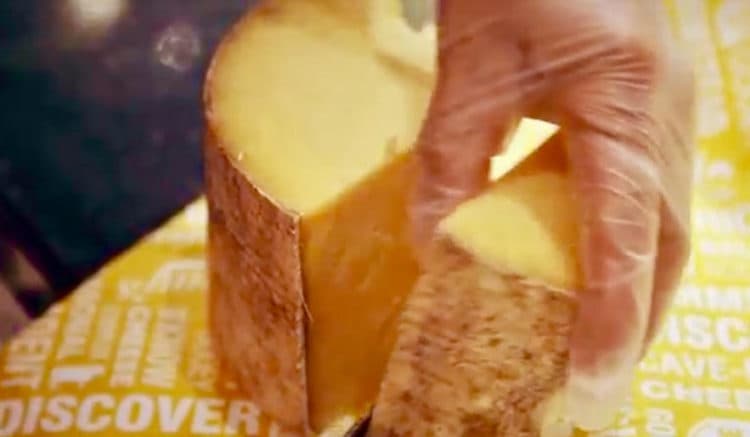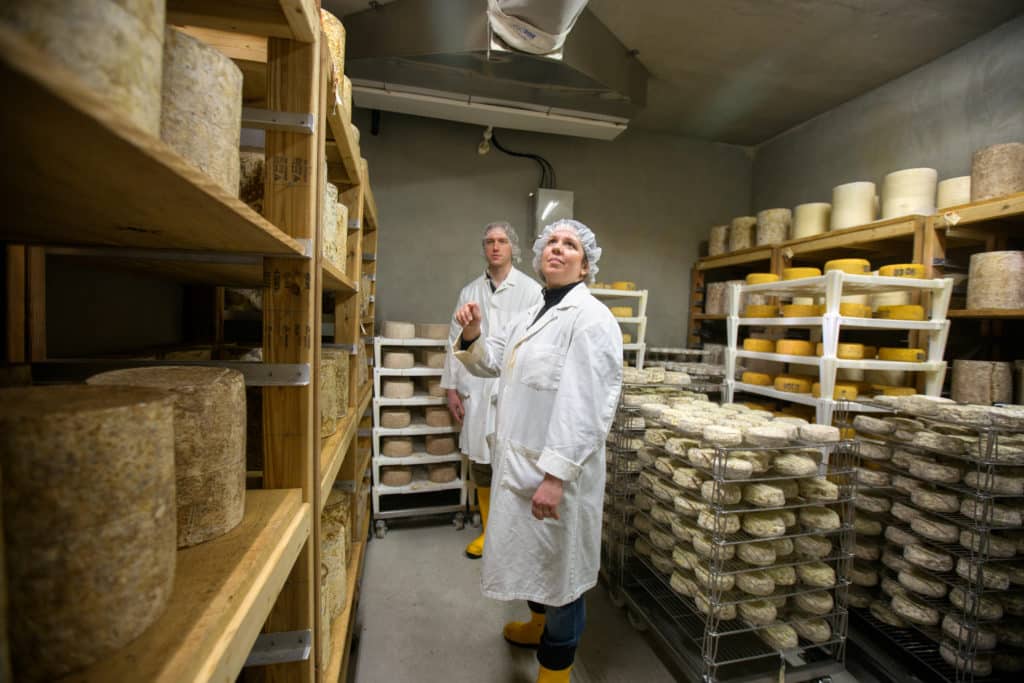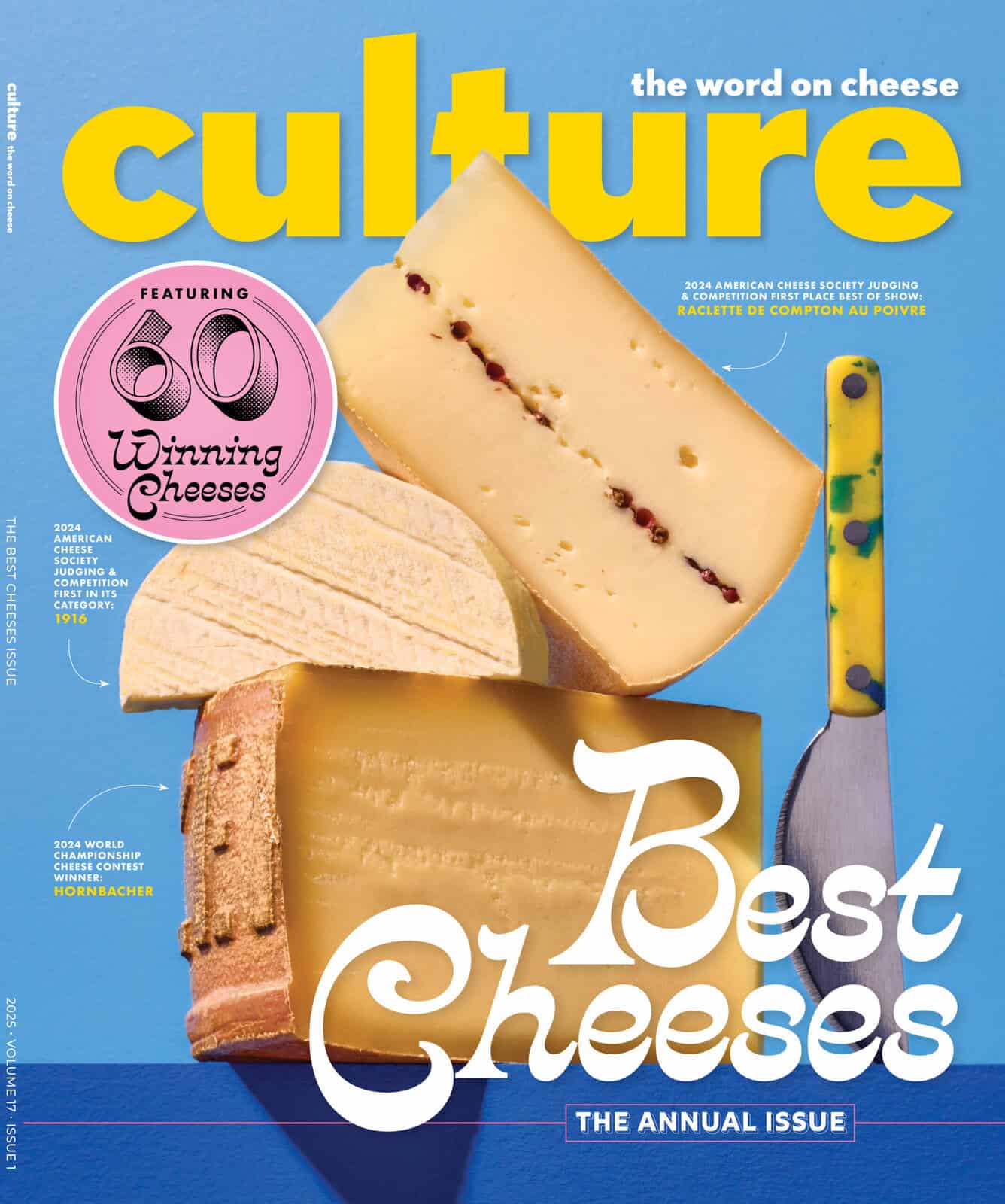
In 2014, Murray’s Cheese in New York City had an idea for a clothbound cheddar modeled on classic British versions. And this year, after two years of development, the company has launched Murray’s Clothbound Cheddar (Cavemaster Reserve) – a bright, lemony flavored cheddar.
Created with milk from cows on campus, the cheese is produced at Cornell University’s Food Processing and Development Laboratory (FPDL) and shipped to Murray’s, where it is wrapped in cheesecloth and rubbed with lard before being stored in rind caves to age for 12 months. It’s the newest New York-made clothbound cheddar on the market.
Cornell grad Matt Ranieri, a food science and dairy technology expert, consulting with Old Chatham Sheepherding Company recommended the company take advantage of the resources available in CALS’ Department of Food Science. The FPDL, Ranieri said, allowed for small-batch experimentation to solve tough research and development challenges. At Cornell, they tested versions of their prototype cheese in small vats, allowing them to maintain tighter control over its development.
“The process involves a lot of variables,” said Steve Millard, Murray’s senior vice president of merchandising and operations. “We went back and forth between Holstein and Jersey milk, and we tried many different culture combinations. During the aging process, we sampled each test batch regularly to find the combination that fit our desired profile.”
Rob Ralyea, senior extension associate and general manager of FPDL, said Cornell’s lab offers many advantages for the New York state dairy industry to help companies like Murray’s get their products on the market.
“Most commercial vats hold about 30,000 pounds. Here at Cornell we can do small volume runs of 50 gallons, and we can do it by hand, allowing us to understand what’s going on throughout the process,” Ralyea said. “The investment in research and development is smaller for our clients, and they don’t have to lose days of production as they develop a new product.”

Caves master PJ Jenkelunas, and his assistant Krista Jacobsen inspect cheese in the company’s cheese caves in New York City. Photo credit: Cornell University
Where a typical cheddar cheese is aged in cryovac plastic, meant to prohibit the growth of molds, the clothbound cheddar is aged under conditions that promote the growth of molds and more complex flavor development.
“Artisan cheeses are not only a boon for producers and consumers, but they also help improve farm viability,” Ranieri said. Farmers can add value to their existing products by manufacturing higher quality raw material to be used by artisan producers, he added.
Murray’s Clothbound Cheddar is a prime example.
“All the elements of this cheese hit on a New York theme,” Millard said. “We use New York state milk, we get our lard from New York pigs, we age it in New York City, and of course it was developed at Cornell.”



